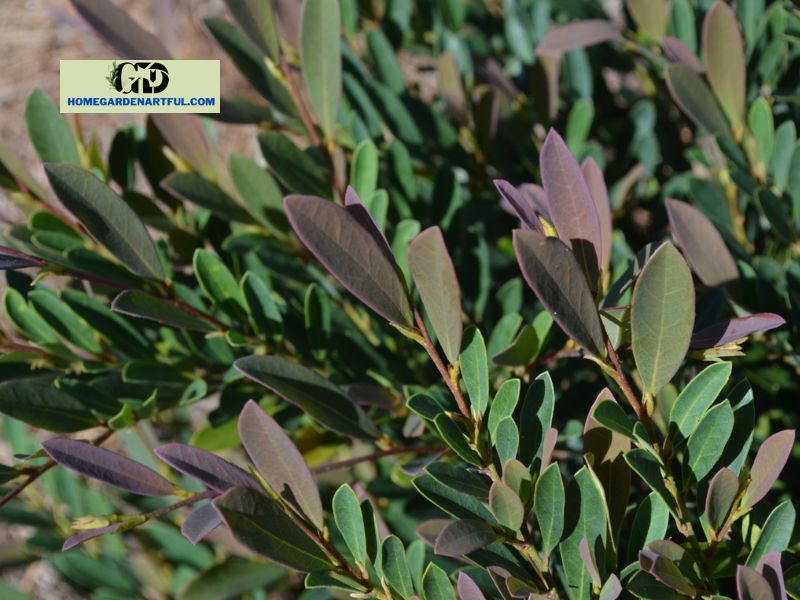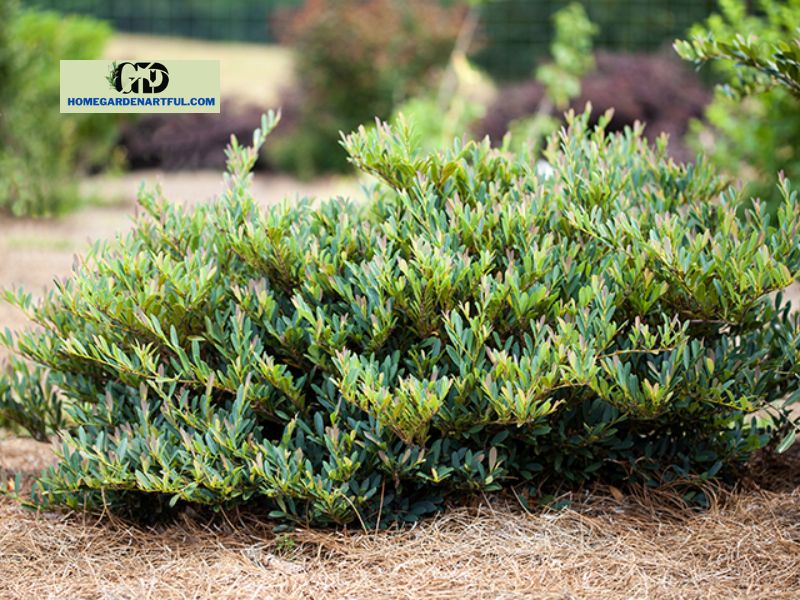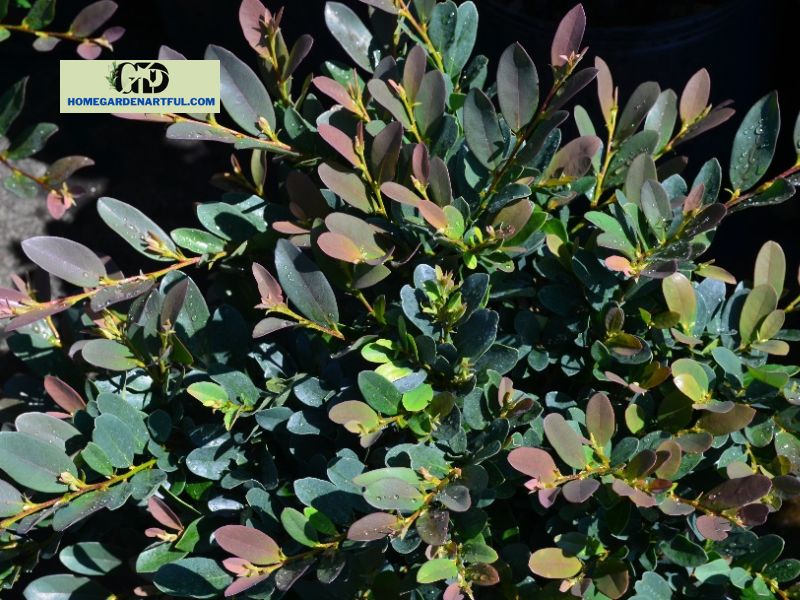Cinnamon Girl Distylium is a great substitute for boxwood and other evergreen plants endangered by diseases and insects in the south since it has thinner foliage and a more elegant appearance than many other distyliums available on the market. One of the species most resistant to cold forms is Cinnamon Girl. As the leaves ripen, they change from plum-purple to a blue-green hue. Discover at homegardenartful.com!
Use of Landscape

Due to its compact growth habit, lovely leaves, and year-round attractiveness, the Cinnamon Girl Distylium is a flexible plant that can be incorporated into a variety of landscaping schemes. Following are a few common landscaping applications for this evergreen shrub:
- Planting around foundations: The Cinnamon Girl Distylium is a great option for foundation plantings around structures since it can help smooth the transition between the building and the surrounding landscape. Due to its small size and dense growth pattern, it is perfect for offering year-round coverage.
- Low Hedges and Borders: This shrub can be used to build low hedges or borders along walks, driveways, or property boundaries because of its dense branching structure as well as manageable size. It is a desirable solution for these applications due to its year-round aesthetic interest and minimal maintenance needs.
- Mass Plantings: To create a rich, uniform ground cover in larger landscaping areas, Cinnamon Girl Distylium can be utilized for mass plantings. When planted in groups, the shrub’s eye-catching foliage and regular growth pattern produce an attractive visual impression.
- Mixed Shrub Borders: To add contrast and year-round interest, blend this evergreen with other shrubs as well as perennials in mixed borders. The distinctive leaf color and texture of the Cinnamon Girl Distylium may give any garden composition depth and variety.
- Container Plantings: The Cinnamon Girl Distylium can be cultivated in containers and used to adorn patios, decks, or balconies due to its manageable size. This is a particularly practical choice for people with limited space or those who want to bring a little greenery to urban settings.
- Erosion Control: The Cinnamon Girl Distylium is a good option for erosion control in landscape designs because of its deep root system, which can assist in maintaining soil on slopes or embankments.
- Wildlife Habitat: The thick foliage of the Cinnamon Girl Distylium can offer valuable protection and cover for little birds and other species seeking sanctuary in the garden, even though it is not a primary source of food for wildlife.
Pruning & Planting Orange Girl Distylium

Due to its hardiness and low maintenance needs, Cinnamon Girl Distylium planting and maintenance are both rather simple. Here are some recommendations to assist you in starting and caring for a strong, thriving plant:
- Selection of Plants: Pick a dependable nursery’s healthy, established plants. Check to see if the plant has a robust root system and doesn’t exhibit any disease or pest infestation symptoms.
- The Cinnamon Girl Distylium enjoys full sun to partial shade for the chosen site. Pick a spot that gets 4-6 hours of direct sunlight each day or more. Additionally crucial to preserving plant health and preventing illness is good air circulation.
- This plant prefers an acidic to slightly alkaline, well-draining soil to grow in. To enhance the structure and fertility of the soil before planting, add organic matter, including compost or well-rotted manure. To avoid root rot, make sure the planting place has appropriate drainage.
- Planting: Make a hole that is somewhat deeper and roughly double the width of the root ball. Make sure the root ball’s top is level with the earth before you plant it in the hole. After placing the adjusted soil in the hole, lightly tamp it down to remove any air pockets. To help the dirt around the roots settle, give it a good watering.

- Watering: To guarantee healthy establishment throughout the first year, water the plant frequently. Once grown, the Cinnamon Girl Distylium only needs moderate watering and is comparatively drought-tolerant. Based on the weather, the soil, and the amount of rain where you live, adjust your watering schedule.
- Fertilization: To encourage wholesome development, use a slow-release, balanced fertilizer in the early spring. For application rates and procedures, stick to the manufacturer’s recommendations. Avoid overfertilizing to prevent excessive growth and decreased cold tolerance.
- Mulching: To assist in retaining soil moisture, control weed growth, and maintain soil temperature, cover the base of the plant with an organic mulch, including shredded bark or pine needles. To avoid rot and pest problems, maintain the mulch at least a few inches away from the stem.
- Pruning: Before new growth starts, prune the Cinnamon Girl Distylium in late winter or early spring. To preserve proper air circulation and shape, cut back any branches that are dead, sick, or crossing over. Additionally, regular pruning will promote denser foliage and keep the plant compact.
- Management of Pests and illnesses: The Cinnamon Girl Distylium has a fair amount of resistance to common pests and illnesses. Check your plant frequently for warning indications of danger, such as leaf spots or wilting, and take immediate action if necessary. To reduce the chance of issues, maintain sound cultural practices including appropriate watering and pruning.
Conclusion
Orange Girl Distylium is a low-maintenance shrub. It hardly ever needs pruning because it grows to be 2-3′ tall by 3-4′ broad. Distylium is also resistant to pests and diseases. It can tolerate full shade but will thrive in a location with partial sunlight. For information on how to prepare the site, water, fertilize, and mulch, go to our planting and care guide. Since distylium is an evergreen shrub, keep in mind that it will require occasional watering during the winter.


